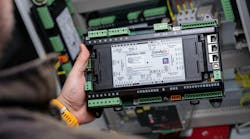Why Data Centers Are Important for the Health Care Industry
Today Data Center Frontier is beginning a series of stories examining the role of data center services in specific industry verticals, and how it will impact demand from those sectors. We begin with the digital transformation of health care.
The entire health care industry is getting a top-to-bottom overhaul thanks to modern technology, timely legislation and a changing demographic landscape. The health care industry is expected to spend close to $2.7 trillion per year on IT infrastructure, including data centers, by 2020.
This signals a huge change in the way health services are administered and means the availability, affordability and uptime of data centers are now top-of-mind concerns for health system administrators.
With the routine storage and transmission of large files such as CT scans, MRIs and other diagnostic images and the rollout of electronic patient health records — which are required in most cases and just good business practice in all others — the time is right for the industry to pivot toward a more robust, standardized and secure digital infrastructure.
Additionally, more and more patients are beginning to recognize the value of telemedicine. Especially popular in the mental health care space, telemedicine uses technologies like VPNs and video conferencing software to remotely meet with patients.
To realize the benefits of modern digital technology, the health care industry is going to need data centers and IT and compliance specialists to make sure everything is up to code with the world’s ever-evolving privacy and security regulations and best practices.
Changes in Health Care Driving Data Center Adoption
As of the American Recovery and Reinvestment Act in 2014, all public and private health care providers — as well as all “eligible professionals” — must transition their practices to electronic health records. The benefits are clear: critical patient histories and records follow patients no matter where they seek treatment, and that same paperwork is less likely to go missing somewhere in a transition or due to misfiling.
The increasing need for data storage solutions has come with both initial and recurring expenses for health care providers, but the convenience and oversight it has introduced have proven vital to the industry.
This federal-level mandate is just one reason among many why the health care industry has become so data-hungry. Another is general legal preparedness, since the careful handling of records is essential in such a risk-averse business.
There is also the sheer number of machines and types of equipment seeing regular deployment during the administration of health care. All of it generates a considerable amount of high-fidelity imaging and diagnostic data:
- CT scanners
- X-ray machines
- MRI machines
The images these machines capture previously occupied folders and files. But now, any health care practitioner a patient might see over the course of their treatment can store and retrieve their records and other documents. This is a significant driver of data storage needs. Although these types of scanners and imaging machines have grown more sophisticated over the years, they still rely on familiar technologies.
The Internet of Things and Health Care Data
Another new wrinkle has appeared in the rollout of digital solutions for the health care landscape: the Internet of Things. The IoT, like data center technology, has many unique applications in health care, manufacturing and the other significant industries we depend on for accuracy and efficiency.
The health care industry currently relies on many fixed-position technologies like high-powered microscopes and detailed scanning equipment. The current and future potential of mobile, always-connected technologies is, if anything, even more impressive. The IoT has gained a significant foothold in the health care industry, thanks to its applications in:
- Patient monitoring devices
- Control stations and monitors for patient rooms
- RFID chips and readers for tracking facility assets and equipment
- Patient drug delivery and scheduling systems
- Wearables for taking physiological benchmarks — blood pressure, blood oxygen, etc.
- Video capture technology
Just like X-rays and MRI machines, the IoT and health-related wearables markets are flooding our practices and hospital systems with considerable amounts of granular, historical data on an ever-growing pool of patients.
The IoT and health-related wearables are flooding medical practices and hospital systems with considerable volumes of granular, historical data on patients.
A variety of devices are already available for capturing, streaming and indexing these files, photos and videos, but equally robust and secure methods will be needed for storing them over time.
The Future of Health Care: A Larger Pool of Patients
Without wading into politics, it’s clear modern opinions on health care are divided, but also drifting decisively toward expanded coverage. With every regulatory step forward, including the Affordable Care Act, and now with talk of expanding Medicare for universal coverage, the pool of patients has gotten gradually larger over the years.
Unfortunately, there’s still a real coverage gap to address before we reach universal coverage. We can expect 3 million retirees to leave the workforce each year over the next two decades, according to 2014 predictions from the Hospitals and Health Network.
Between the changing regulatory landscape, larger pools of insured persons seeking preventive and emergency treatment and an aging population, we’ll not only see a need for more doctors, nurses and community medical centers. We’ll also see an explosion of data centers to contain the collected information of tens of millions — and eventually hundreds of millions — of individuals.
This is the scope of the challenge awaiting health care. Meanwhile, the equally daunting task of keeping all this data secure for our retirees, pediatric patients and every average citizen who takes part in the health care system complements this roadblock.
HIPAA Compliance Drives Requirements
HIPAA now requires higher levels of vigilance from health care providers when it comes to data handling practices and communication protocols, but it has come with some growing pains. Some 36 percent of all reported industrial data breaches took place in the health care industry, according to reports from 2017.
We can expect HIPAA compliance to become a major differentiator for data center and cloud computing providers who want to capitalize on demand from the health sector and expand their services to new industries. Compliance includes maintaining high privacy and cybersecurity standards and carrying out timely technology and process transitions. Examples include the government-mandated move to electronic health records and end-to-end encrypted communication systems for discussing patient cases and transmitting sensitive records.
We can expect HIPAA compliance to become a major differentiator for data center and cloud computing providers who want to capitalize on demand from the health care sector.
HIPAA compliance — and other laws like it — are important for the future of the health care industry, the care of an aging population and extending services to a growing number of insured people seeking health care for the first time.
Realistically, it also means not every hospital system will have the means to update their infrastructure or build an on-premises data center. And those who do might find it’s best to move forward with a subscription or contract with a third-party software, security, IT or cloud company – creating either direct or indirect demand for data center services.
Needed: Health Care Data Architects & Compliance Specialists
This transition represents a perfect storm of necessary changes. Imaging technology has grown more complex and is producing larger files than ever, as the size of a standard MRI image has doubled since 2005. Vast portions of the workforce are retiring at once. More social health care regulations are making the pool of ensured citizens grow ever larger.
Beyond the obvious conclusion — which is that we’re going to need many more data centers than we have now — we’re also going to need more security, IT and compliance specialists.
It’s unlikely an industry apart from health care could better represent the coming together of public and private interest — and the high-tech and the traditional — and help us to organize our efforts, resources and talents. Clearly, this field is full of opportunity.


